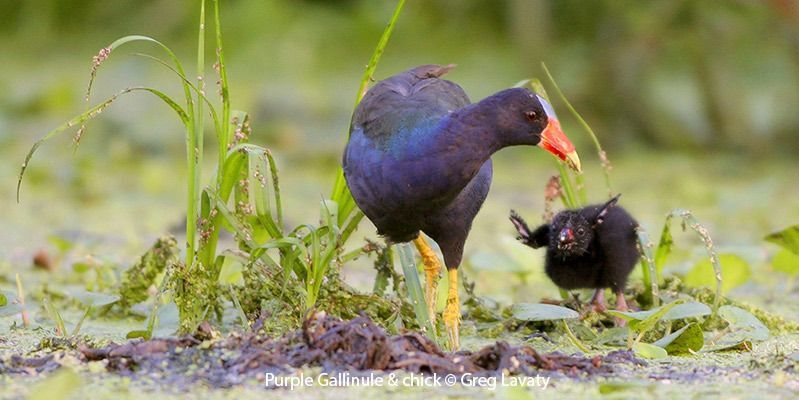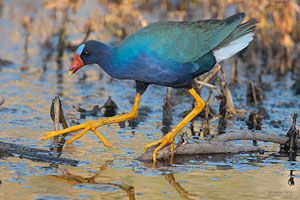
© Joanne Kamo
Purple Gallinule
Porphyrula martinica
Family: (Rallidae) Rails, Gallinules, and Coots
Preferred Habitat: Marshes.
Seasonal Occurrence: Common May through September. Breeds in our area.
Notes by Meghan Anne: Purple Gallinules have arrived at the rookery in the High Island Smith Oaks Sanctuary. They are spotted often and easily from our platforms as they forage around the rookery islands. They use their long toes to walk across floating vegetation or balance on bushes or low trees. They have a varied diet and will feed on flowers, fruits, grains, seeds and some invertebrates, occasionally even the eggs and young of other birds.
This beautiful bird grabs your attention with its purple head and neck, green back and light blue forehead. The juvenile is pale brown with a greenish back and the chicks are black. They spend the summer along the southeast US coast and are residents in Florida, Central and South America. They prefer freshwater marshes with extensive floating vegetation and brushy edges.
Purple Gallinules may appear awkward when they fly short distances with their bright yellow legs dangling beneath them, but individuals are routinely spotted far outside their range as they stray to the north, even as far as Canada. While they are still listed as a species of Least Concern by the IUCN, their population has decreased with the loss of necessary wetland habitat.
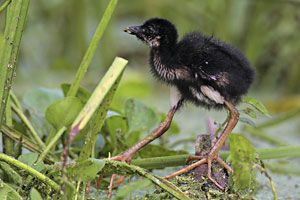
© Greg Lavaty
Profile by Grace Yaros: These multicolored, curious-looking birds are relatives of rails, and like many other rails are fond of wetland habitats with plenty of places to hide from potential predators. Adult Purple Gallinules have dark purple-blue heads and underparts, with a contrasting bright white under-tail. Their backs and wings are an iridescent turquoise green. Their bills are bright red with a yellow tip, and they have a light blue frontal shield just above their bill. They have bright yellow legs and exceptionally long toes that allow them to walk across floating vegetation by distributing their weight more evenly across the vegetation and preventing them from sinking. They are also accomplished swimmers and divers! Purple Gallinule chicks are black when they first hatch, then become golden-brown with some blue in the wings. Adults may be confused with Common Gallinules, but Common Gallinules are black and brown, without the bright purple and blue tones of Purple Gallinules. Common Gallinules also have a thin white stripe down their sides, which Purple Gallinules lack.
Purple Gallinules are found in freshwater habitats with sufficient vegetation to provide space for them to nest and forage, such as marshes and along the edges of ponds and lakes. Many freshwater ponds that these birds traditionally would have fed and nested in have been destroyed and replaced by agricultural fields, but they have adapted well to the use of rice fields. The majority of their diet consists of seeds, flowers, and fruits of aquatic plants, but they also commonly eat insects, fish, frogs, and eggs and nestlings of other birds.
They are year-round residents in Florida and the West Indies, and from Mexico through central South America. They are locally common during the breeding season along the Gulf Coast and migrate south for the winter. Purple Gallinules are prone to wandering outside of their expected range, however, and individuals have been found as far as Europe and South Africa! In 1962, a pair of Purple Gallinules and their nest were discovered in Ohio– the northernmost known nesting record for this species! In the Houston area, these spectacular birds can be seen at Brazos Bend State Park, Sheldon Lake State Park, Anahuac National Wildlife Refuge, and at Houston Audubon’s Smith Oaks Bird Sanctuary.
-
Cornell Lab of Ornithology
-
Bird Guide
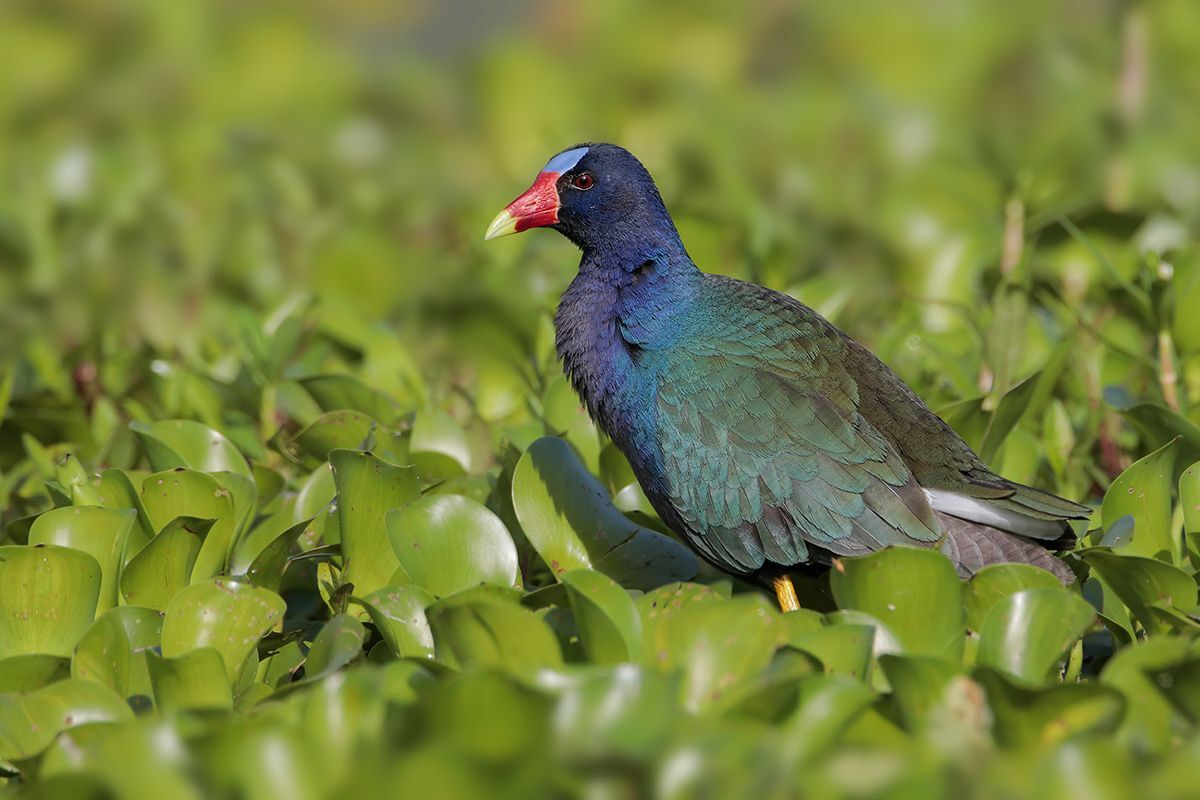
© Greg Lavaty, www.texastargetbirds.com
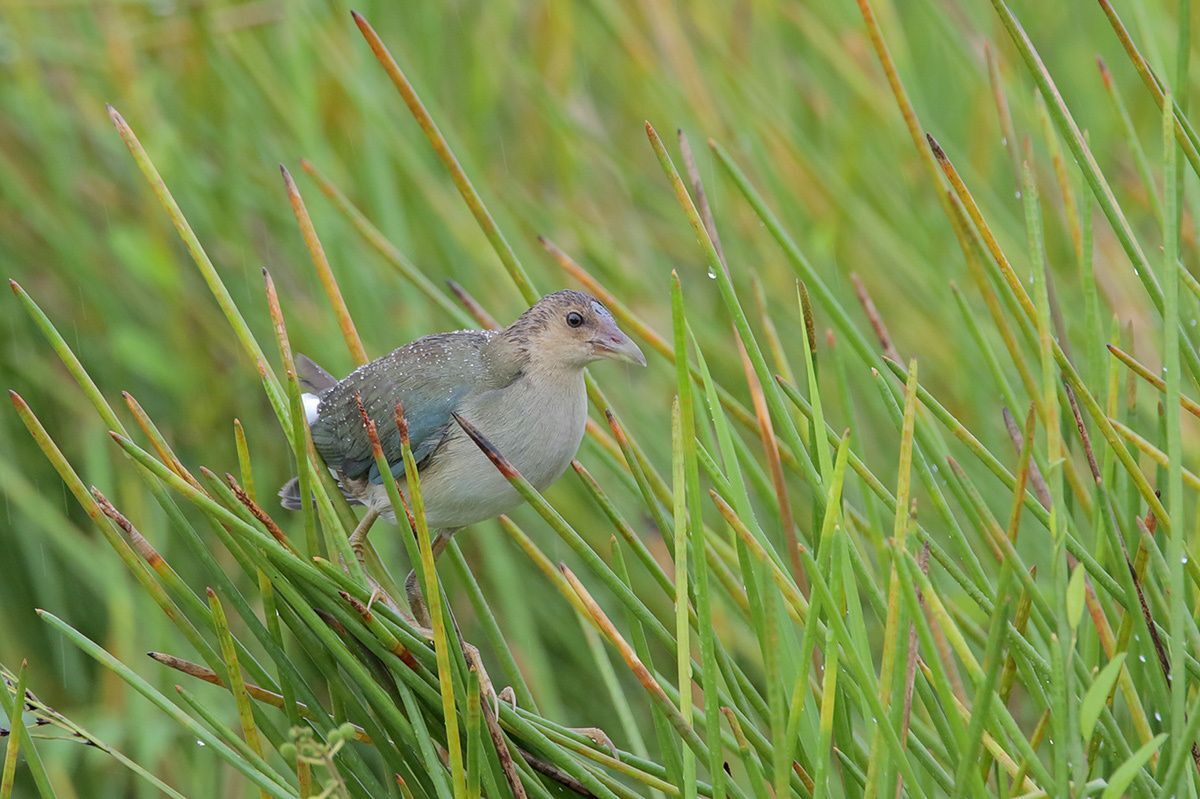
© Greg Lavaty, www.texastargetbirds.com
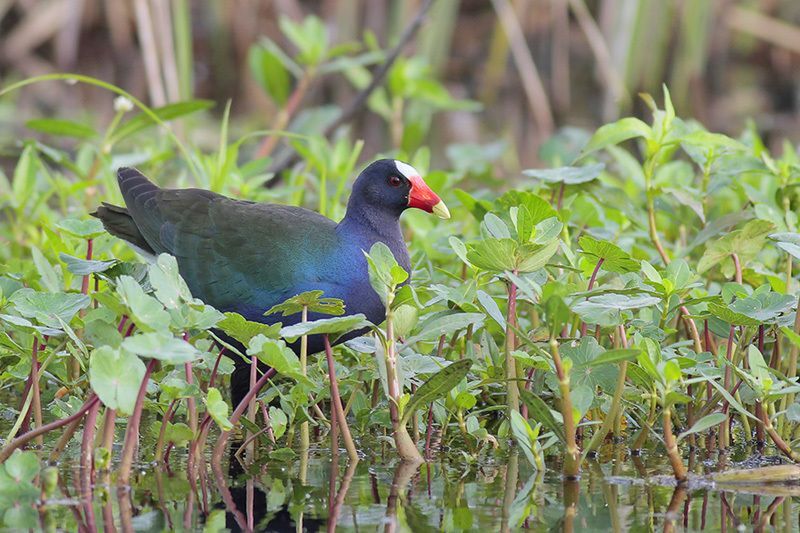
© Greg Lavaty, www.texastargetbirds.com
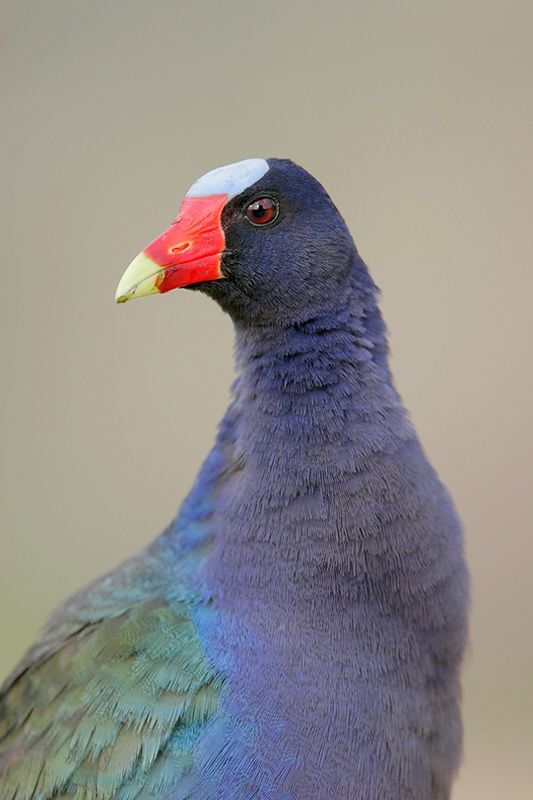
© Greg Lavaty, www.texastargetbirds.com

